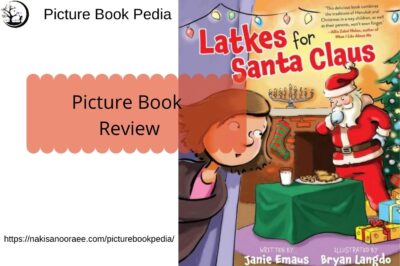Thanks to author Janie Emaus for kindly sending me a copy of her book and offering me this chance to review her book. Get her book at Amazon or Barnes & Noble.
Emtional Social Learning (ESL)
The story is about a Jewish girl whose new dad and stepbrother are Christian. She faces a new tradition and struggles to adapt to it by leaving a treat for Santa. The base message of the book is being open-minded and valuing other’s religions and worldviews and also celebrating your own tradition. This topic is relatable to second-generation immigrant children also; these children experience two different traditions and cultures; in kindergarten, they experience one Christmas and at home, they celebrate Chinese new year or Persian new year (like my son) or Day of the Dead, etc. It is crucial to show children no tradition is superior to any other, and teach them the essence of celebrations is to bring individuals closer to each other.
This is what the Protagonist of this story struggles to. She comes up with ideas of a treat for Santa and her stepbrother rejects one idea after another. She doesn’t give up.
Setting
This story uses possibly the most-saturated topic in the children’s book market; Christmas, but with a unique twist. The book shows two traditions side-by-side; Jewish and Christmas. It creates a hybrid setting between the two known settings.
Characters
The story has two characters: a girl (the Protagonist) and her stepbrother. The role of the stepbrother is interesting. His comments show the Protagonist that her solutions for offering Santa delicious food are not good. But, the girl doesn’t give up.
Narrative Structure
Hook: writing the first line/page of a book that hooks the reader is difficult. This book has the funniest possible start; a letter to Santa. But, again with a twist. The letter does not tell Santa to bring what, but to welcome him to her home and promise Santa a treat!
Narrative Ending: the last page of the book is again a letter. Santa’s letter to the girl. Thus, the ending is circular.
Story Question (Dramatic Question): many picture books fail to establish a Story Question. Right on the second page, we read the stepbrother says: “my cookies are the best Santa treat ever.” and this sentence helps to form the Story Question in the reader’s mind: “Will the girl (Protagonist) be able to find a delightful treat for Santa?” If the reader wants to find out the answer, he/she has to turn the page and continue reading, which is the aim of the Story Question.
Point Of View
The story is written the limited third-person POV (this blog post discusses types of POV in detail). The Narrator has access to the inside of Protaganoist’s mind; for example, the last line of this spread reads: “Anna’s mind whirled”.

The choice of the POV is wise. If the POV was omniscient third-person POV, we could read more about stepbrother which was unnecessary. If the POV was objective third-person POV, the reader wouldn’t connect with the Protagonist and her feelings.
Pitch
Janie pitched her manuscript PitMad. Her pitch is here.
If you would like me to review your picture book, please drop me a line.
I write blog posts about the craft of writing picture books regularly. The list of my previous posts is on the Picture Book Pedia page. If you would like to stay tuned to my newsletter, please enter your email address:


Thanks so much for reviewing my book! It is currently on sale now for 1/2 off, since the holidays are over. Santa may be back in the North Pole, but sibling stories are good all year long.